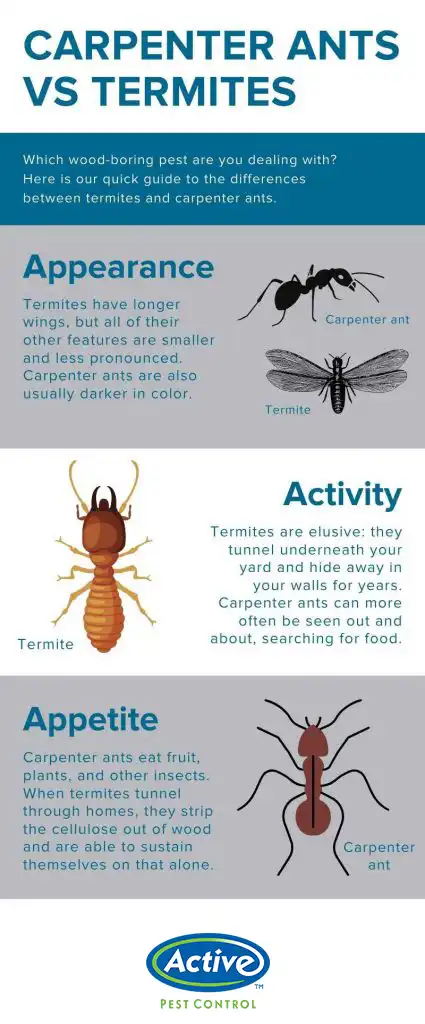Carpenter Ants vs Termites: How To Distinguish Between Them
Serving Atlanta Metro | Columbus | Augusta | Savannah
How to Tell the Difference Between Carpenter Ants and Termites – The Short Answer
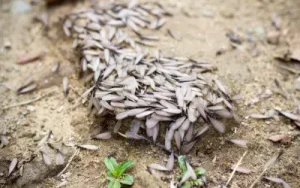 Is that a termite or a carpenter ant? It can be tough to tell the difference. That’s why we’re here to give you the quick answer on how to distinguish between these two wood-destroying insects.
Is that a termite or a carpenter ant? It can be tough to tell the difference. That’s why we’re here to give you the quick answer on how to distinguish between these two wood-destroying insects.
Differences Between Carpenter Ants and Termites
- Appearance: Carpenter ants are usually black, but may have brown or red coloring. They have a straight, segmented body and bent antennae. Termites are creamy white or tan and slightly translucent. They have a narrow waist and straight antennae.
- Nests: Carpenter ants create surface-level galleries in wood. Inside homes, they tend to be found in damp areas like kitchens, bathrooms, and crawl spaces. Drywood termites nest directly in wood, often deep within the structure of a building. Subterranean termites build underground nests and use mud tubes to access wood structures.
- Wings: Carpenter ants have front wings that are larger than their back wings. In contrast, termites have wings of equal length.
- Damage: Carpenter ant damage is usually smooth. Termite damage is much rougher and more uneven. Carpenter ants don’t eat wood; they use it to excavate their galleries. Termites constantly eat wood, and as a result, their damage is often more severe. With termites, you may also notice signs of termite damage like blistered or warped wood, peeling paint, and hollow-sounding wood.
Keep reading for a more in-depth look at the differences between carpenter ants and termites, and how to tell these two common wood-destroying pests apart.
Listen Now: Distinguishing Carpenter Ants vs Termites
Prefer to listen? This audio deep dive also covers everything you need to know!
How to Distinguish Between Carpenter Ants and Termites – The Long Answer
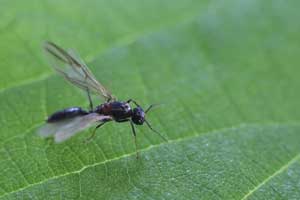
The difference between flying ants vs termites can be tricky. Given their similarities to termites, carpenter ants can be dealt with in ways that aren’t as efficient as possible. When you work with the pest control experts at Active Pest Control, we will identify exactly what type of pest you’re dealing with and put a plan in place that takes both control and prevention into account.
Identifying Carpenter Ants
Appearance
Carpenter ants are among the largest ants in the United States, typically measuring ¼ to ½ inch in length. They are usually black but can also be red, brown, or a combination of these colors. Carpenter ants are distinguished by their segmented body and bent antennae. Unlike termites, their wings are of unequal length, with the front pair longer than the back.
Nests
Carpenter ants do not eat wood but excavate it to create their nests. These nests are often found in moist wood such as decaying trees, stumps, or wood affected by water damage. Inside homes, they may nest in damp areas like bathrooms, kitchens, and crawl spaces.
Signs of Infestation
A carpenter ant infestation can be identified by:
- Frass: Fine sawdust-like material that results from their excavation.
- Rustling sounds: You may hear faint sounds of ants moving within walls.
- Winged swarmers: Flying carpenter ants can be seen during mating season, often near windows and doors.
Identifying Termites
Appearance
Termites are smaller than carpenter ants, typically measuring ¼ to ½ inch in length, and they have straight antennae. Their wings are equal in size and twice as long as their bodies. The drywood termites and subterranean termites are the most common species encountered in homes.
Nests
Termites create colonies in different environments depending on the species:
- Drywood termites: Nest directly in dry wood without requiring soil contact.
- Subterranean termites: Build nests in the soil and construct mud tubes to access wood above ground.
Signs of Infestation
Key indicators of a termite infestation include:
- Mud tubes: Pencil-thin tunnels on walls, foundations, or in crawl spaces.
- Hollow-sounding wood: Termites consume wood from the inside, leaving it hollow.
- Discarded wings: Termite swarmers shed their wings near windows, doors, or light sources after mating.
Say Goodbye to Pest Problems for Good!
Fill out the form below and we’ll be in touch!
*During normal business hours. After hours inquiries will be returned the next business day.
Carpenter Ant Damage vs Termite Damage
Identifying Carpenter Ant Damage
Carpenter ants excavate wood to create smooth, clean tunnels and galleries. Unlike termites, they do not consume wood but push the frass out of their nests.
Damage is often found in moist wood, where pests create smooth, hollowed-out galleries. Over time, this can weaken the structure, making wood brittle and unsafe.
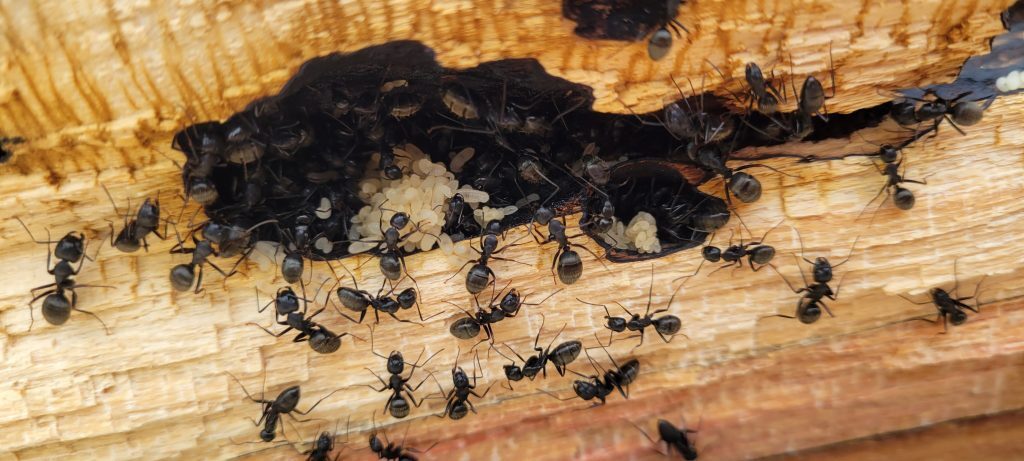
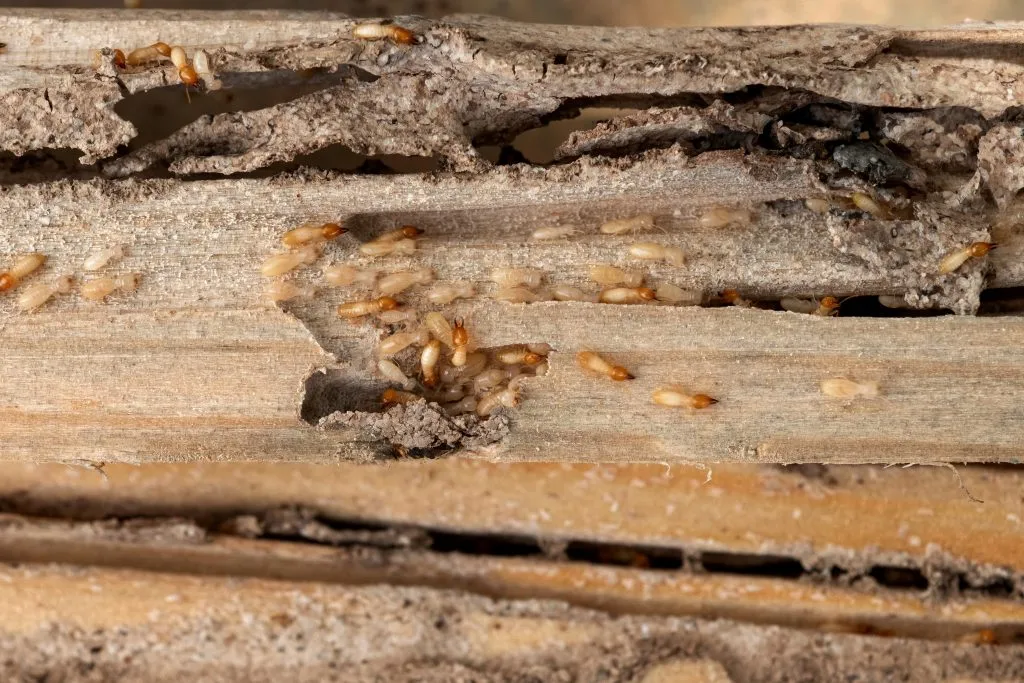
Identifying Termite Damage
Termite damage is generally more severe since they consume wood for food. Their tunnels look rough and are often filled with soil or mud. Signs of termite damage include blistered or warped wood, small holes, and hollow-sounding wood when tapped. Subterranean termites can cause widespread damage, often staying hidden for long periods, leading to costly repairs.
How to Get Rid of Carpenter Ants and Termites
The first step is prevention. Keeping your yard organized and eliminating sources of moist wood can help deter wood-boring pests. Regularly inspecting your home for cracks or potential entry points and sealing them is another effective preventative measure. Also, clean up wood debris, remove tree stumps, and ensure proper drainage around your home to help reduce the chances of infestation.
However, if you’ve already discovered carpenter ants or termites in your home, you should contact a pest control professional as soon as possible. These pests often go unnoticed until significant damage is done.
Your local pest control company can conduct a thorough inspection to determine whether you’re dealing with a carpenter ant infestation or a termite infestation. Professional treatments may include targeted bait systems, chemical barriers, and direct treatment of nests to eliminate pests at the source. At Active Pest Control, we’ll also provide guidance on long-term prevention to ensure these pests don’t return.
Contact our team at Active Pest Control today for a free quote on carpenter ants or termite control in Atlanta, GA!
Frequently Asked Questions
Yes, a carpenter ant infestation can weaken wood structures over time. Prompt treatment can prevent further damage.
Carpenter ant wings are of unequal length, with the front pair larger than the back. In contrast, termite wings are of equal length.
While carpenter ants are not as destructive as termites, they can still cause significant damage to wooden structures if left untreated.
Yes. They often enter homes through cracks, gaps, or damaged wood. They are especially attracted to areas with high moisture levels.
Termites and other flying ants are often mistaken for carpenter ants due to their similar appearance. Proper identification is essential for effective pest control.
Identifying the pest involves looking at their appearance, nesting habits, and signs of damage. See our guide above.

